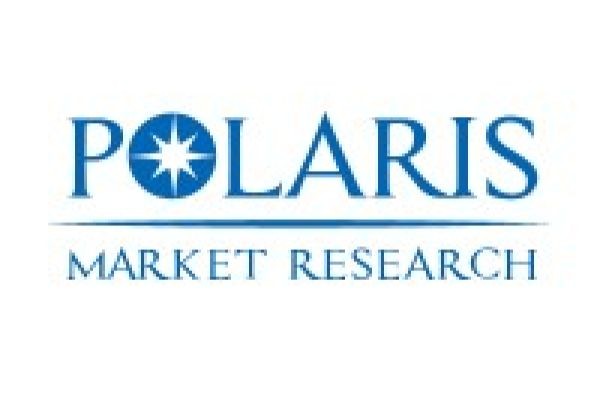Global Fungal Staining Reagent Market is witnessing strong momentum driven by the increasing prevalence of fungal infections, advancements in staining techniques, and rising demand for accurate diagnostic tools in clinical and research laboratories. According to new market insights, the market is projected to experience substantial growth over the coming years, supported by innovative product development and rising investment in infectious disease diagnostics.
Market Overview
Fungal infections, once considered rare and often overlooked, have now become a growing public health concern globally. Immunocompromised populations, including patients undergoing organ transplantation, chemotherapy, or suffering from chronic illnesses, are particularly vulnerable to severe fungal infections such as candidiasis, aspergillosis, and cryptococcosis. In this context, the fungal staining reagent market plays a pivotal role in enabling early, accurate detection and identification of fungal pathogens.
Advancements in microbiological diagnostics, including improved sensitivity of fungal staining reagents, have further strengthened their clinical relevance. Traditional stains like potassium hydroxide (KOH), Gomori methenamine silver (GMS), and Periodic Acid-Schiff (PAS) remain staples, while newer formulations offer enhanced visualization with reduced background interference.
Growing demand for high-throughput diagnostic procedures, automation in laboratories, and stringent regulations for accurate diagnosis have encouraged manufacturers to focus on reagent stability, specificity, and ease of use. The surge in global diagnostic laboratory networks, especially in emerging economies, is expected to further propel market demand.
Market Segmentation
The fungal staining reagent market can be segmented based on product type, application, end-user, and geography.
By Product Type:
-
Potassium Hydroxide (KOH)
-
Calcofluor White Stain
-
Gomori Methenamine Silver (GMS) Stain
-
Periodic Acid-Schiff (PAS) Stain
-
India Ink
-
Other Specialized Stains
KOH and Calcofluor White are among the most commonly used reagents in primary care and diagnostic laboratories due to their high sensitivity in detecting fungal hyphae and spores. Meanwhile, GMS and PAS are preferred in histopathological assessments for deep tissue infections.
By Application:
-
Clinical Diagnostics
-
Research Laboratories
-
Pharmaceutical Testing
-
Veterinary Diagnostics
-
Environmental Microbiology
Clinical diagnostics dominate the market, accounting for the largest share due to the routine use of staining reagents in hospitals and pathology labs. However, the research segment is projected to grow rapidly with increased focus on mycology and antifungal drug development.
By End-User:
-
Hospitals and Diagnostic Laboratories
-
Academic and Research Institutes
-
Pharmaceutical Companies
-
Contract Research Organizations (CROs)
Hospitals and clinical labs continue to be the key end-users, while academic institutes are emerging as significant contributors, driven by funding in infectious disease research and rising mycology education initiatives.
Regional Analysis
The fungal staining reagent market shows distinct growth patterns across regions, with North America and Europe currently leading due to advanced healthcare infrastructure and high awareness.
North America
North America, particularly the United States, holds the largest market share, driven by the high prevalence of fungal infections, well-established healthcare systems, and proactive diagnostic guidelines by organizations like the CDC and IDSA. The region benefits from a large base of clinical laboratories and biotechnology firms engaged in mycological research.
Europe
Europe is a mature market, with countries like Germany, the UK, and France at the forefront of histopathological diagnostics and reagent manufacturing. The growing geriatric population and rising incidence of hospital-acquired fungal infections are fueling the need for efficient diagnostic tools.
Asia-Pacific
The Asia-Pacific region is poised for the fastest growth, attributed to improving healthcare access, expanding diagnostic networks, and increasing awareness of fungal diseases in countries like India, China, and Japan. Government initiatives for infectious disease control and medical diagnostics modernization are significant growth drivers.
Latin America and Middle East & Africa (LAMEA)
While still developing, the LAMEA market is witnessing a rise in fungal infections due to increasing immunocompromised populations and tropical climates. The ongoing expansion of healthcare infrastructure and international aid for disease control initiatives are gradually improving diagnostic capabilities in these regions.
Key Companies in the Market
The fungal staining reagent market is moderately fragmented with a mix of global and regional players focusing on innovation, quality, and compliance with clinical regulations.
1. Thermo Fisher Scientific Inc.
A global leader in diagnostic reagents, Thermo Fisher offers a broad spectrum of staining solutions for clinical and research use. The company’s investment in R&D and extensive distribution channels bolster its market dominance.
2. Merck KGaA (MilliporeSigma)
Merck provides an array of high-quality histological and microbiological stains, including those specific to fungal detection. Their ongoing efforts in standardization and user-friendly packaging contribute to strong market presence.
3. Bio-Rad Laboratories, Inc.
Known for its strong laboratory diagnostics portfolio, Bio-Rad focuses on delivering precision reagents tailored to microbiological research and clinical applications, including fungal diagnostics.
4. Abcam plc
Specializing in high-specificity stains and research reagents, Abcam’s contribution is significant in academic and research laboratories focused on fungal pathology.
5. FungiFluor by SouthernBiotech
SouthernBiotech's FungiFluor is one of the well-known calcofluor white products for fluorescence-based fungal detection, popular in research and diagnostic settings.
Other notable players include:
-
Hardy Diagnostics
-
Becton, Dickinson and Company
-
HiMedia Laboratories
-
Leica Biosystems
-
Agilent Technologies
These companies are adopting strategies like product innovation, mergers & acquisitions, and regional expansions to consolidate their positions in the competitive landscape.
Explore More:
https://www.polarismarketresearch.com/industry-analysis/fungal-staining-reagent-market
Conclusion
The Fungal Staining Reagent Market is on a robust growth trajectory, propelled by rising cases of fungal infections, increasing global awareness of fungal diseases, and rapid advancements in diagnostic technologies. Innovations in staining reagents, along with the expansion of diagnostic services in emerging economies, are expected to significantly impact the market landscape.
With a growing focus on early and accurate diagnosis, stakeholders—including hospitals, laboratories, research institutions, and reagent manufacturers—stand to benefit from expanding market opportunities. The global push for improved infectious disease management, particularly post-COVID-19, has further reinforced the need for effective diagnostic reagents, placing fungal staining solutions at the forefront of microbial diagnostics.
More Trending Latest Reports By Polaris Market Research:

